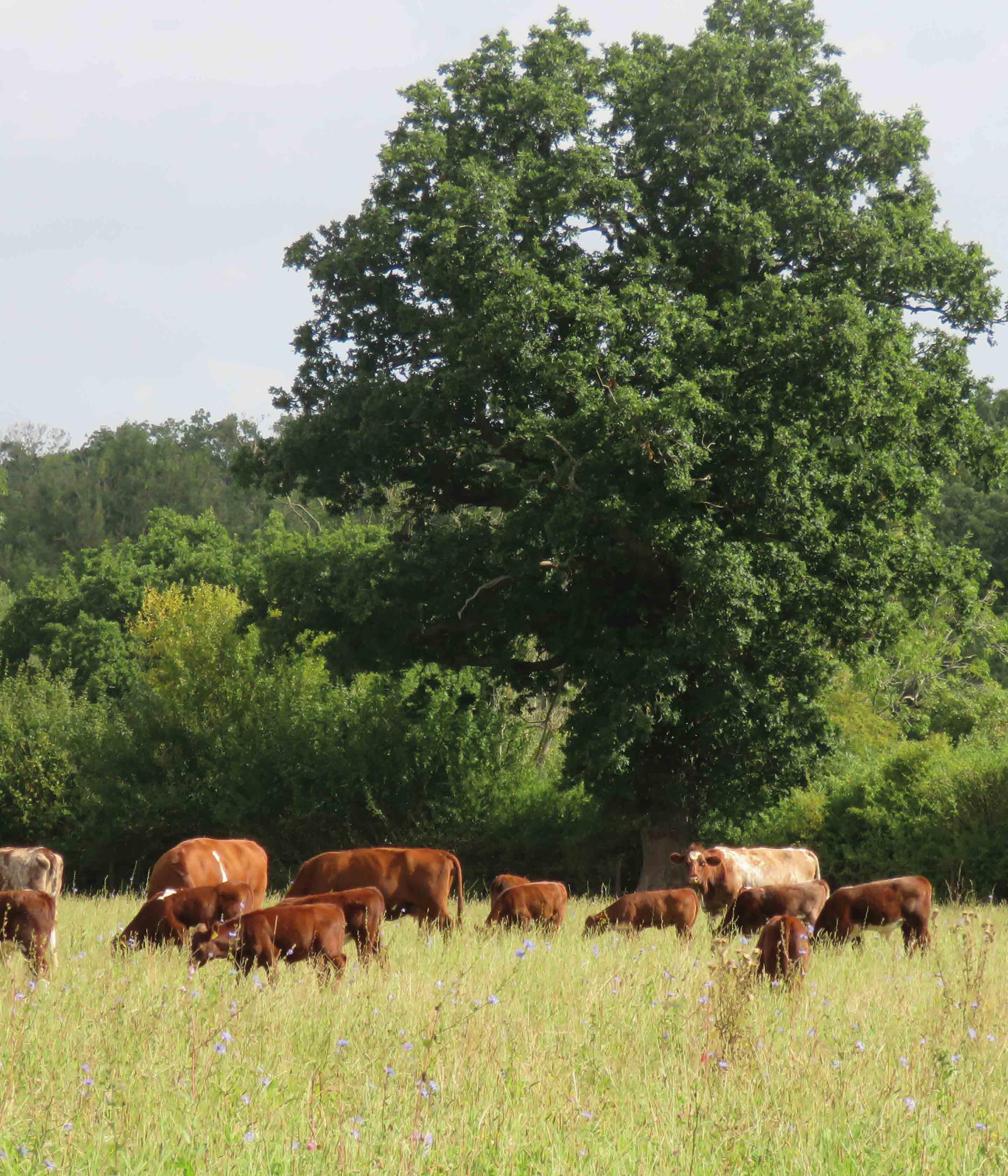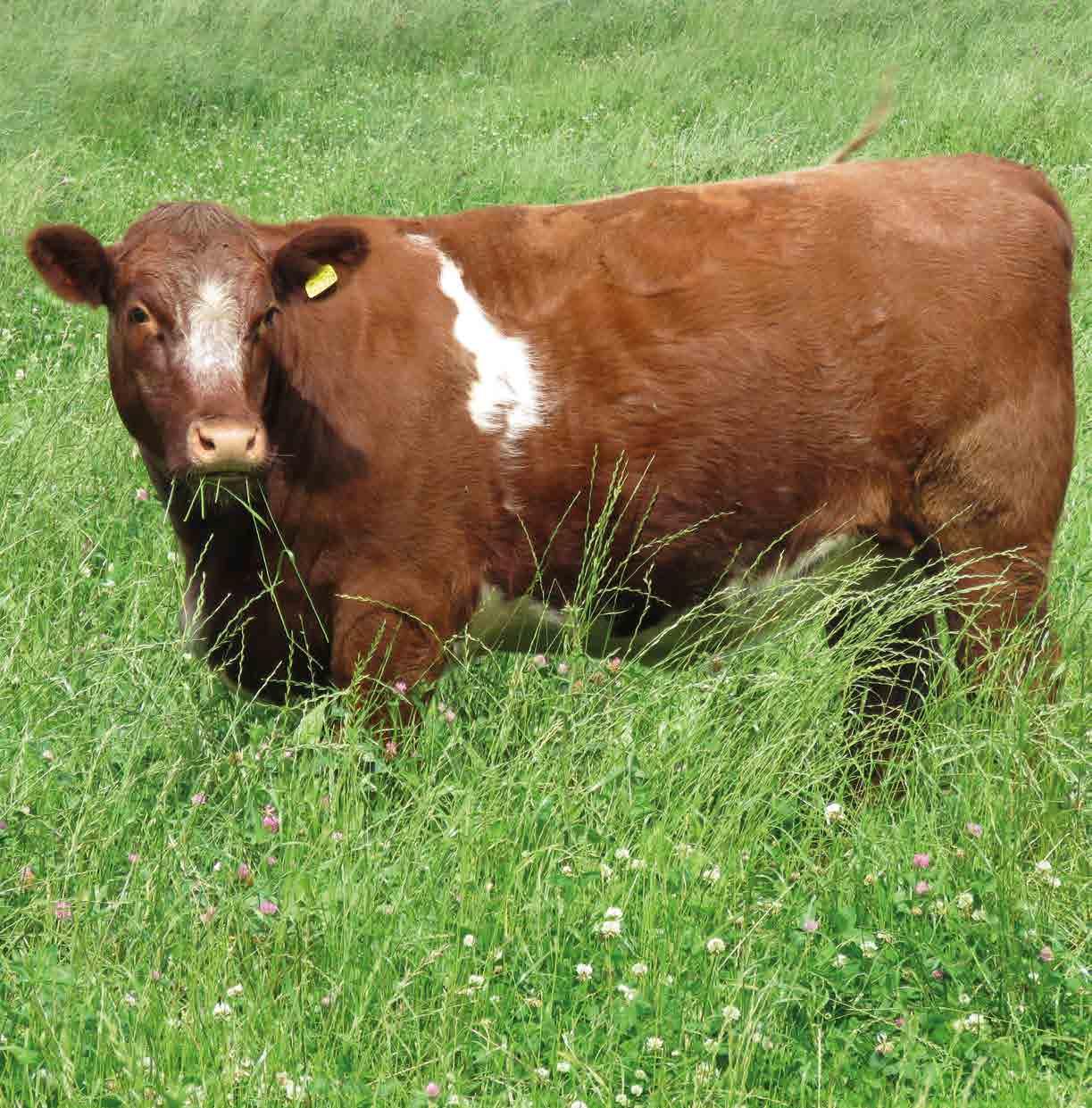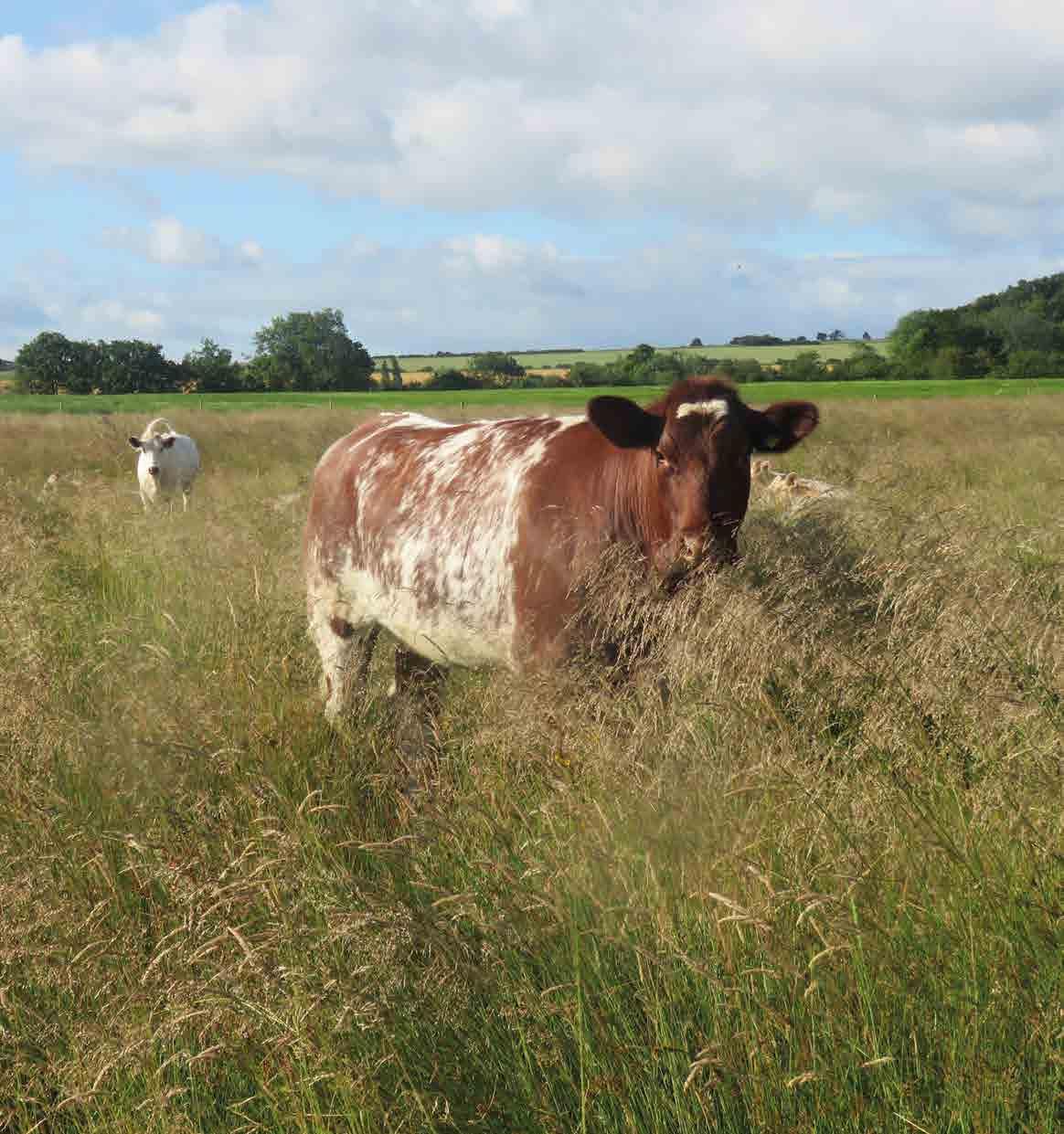
5 minute read
Shorthorns fit regenerative systems
Beef Shorthorns in regenerative farming systems
By Fraser Hugill
Advertisement
The term 'Regenerative Farming' is very fashionable at the moment, illustrated by the fact that more than 5000 farmers and regenerative agriculture enthusiasts attended Groundswell the regenerative farming event in June where I helped staff the Beef Shorthorn stand.
What is Regenerative Farming? Conduct an internet search and you will get various different definitions. My take on regenerative farming is that it is simply farming that enhances rather than depletes your farm’s natural resources, be that soils, water or biodiversity.
As a Yorkshire man I also see it as a set of principles that will hopefully enhance rather than deplete my financial resources.
When talking about regenerative agriculture it is important to understand the five key principles regenerative farmers follow;
• Don’t disturb the soil. • Keep the soil surface covered. • Keep living roots in the soil. • Grow a diverse range of crops. • Bring grazing animals back to the land. Gabe Brown, one of the pioneers of the regenerative farming movement from America, added a sixth important principle and that was ‘Context’.
Regenerative farming is about what works for you on your farm with your unique set of circumstances. This is much the same for Shorthorns, the right animal is the one that fits your system and as a breed we are blessed with 200 years of breeding providing a range of genetics to fit almost any farm system.
Spending time on the Beef Shorthorn stand at Groundswell was a fantastic opportunity to talk to farmers that currently had no cattle, but were recognising the need to get grazing animals back into their farm systems and to talk about how a Beef Shorthorn could be just as useful to repair the soil as a direct drill.
Unsurprisingly conversations led to “Why Beef Shorthorns for a regenerative farming system?” which was fortunately an easy question to answer.
• Beef Shorthorns are docile – For farms that have not kept cattle in a generation this is a key trait. They want something that is quiet to handle and not going to immediately exit the field into the adjoining arable crops.
• Beef Shorthorns are easy calving – These farmers have often not kept livestock, so there is trepidation around calving, particularly where the objective was to have cattle out most, if not all, of the year.
• Beef Shorthorns are hardy and can live off grass - This was an absolute essential as the cow is delivering an important ecosystem function of regenerating the soil and they don’t want something that is eating the increasingly expensive grain heap.
• Beef Shorthorns produce a great end product with a premium market. The new flyer produced by the Society highlighting the premium available was really valuable to give confidence of an end market. It was, however, also important to highlight the fantastic eating qualities of the Beef Shorthorn. A principle of many farms moving down a regenerative or agroecological route is to get closer to people and the end market and they want a high-quality product the Beef Shorthorn can deliver.
An interesting observation was regarding cow size. Many farmers came onto the stand and indicated they did not want the cattle to be too big.
Greg Judy, a rancher from America was giving demonstrations and his message was that big is not necessarily best, not something you associate with Americans. He believes smaller cattle are more efficient at turning sunlight via forage into meat.
This was a different shop window for the breed than say an agricultural show and highlighted the need to maintain our broad range of genetics to provide the ideal type and scale of Beef Shorthorn for the environment it is living in and the function we want it to deliver.
Its important to highlight that regenerative farming is not just about arable farming and putting Beef Shorthorns back into lowland
Clover-based leys add fertility to regenerative arable systems and make a great basis for introducing livestock and species diversity to farms.

systems. The principles are just as applicable in pastoral lowland or upland systems.
I have mentioned the importance of diversity in Beef Shorthorns and that principle runs through regenerative farming. Moving away from monocrops of say ryegrass to more diverse swards with a mix of grasses, legumes and herbs is equally important and we need a cow that can turn this efficiently into meat.
Rest is also a key component of regen systems. Resting land to enhance the living root and also to let diversity happen naturally. Turning the Shorthorns into a field where you would normally take a mower is a strange experience, but one the Shorthorn is well suited to as a natural grazier.
Beef Shorthorns are well proven in delivering habitat management through Stewardship Schemes, attracting native breed supplements and fitting into all types of sustainable farm systems. The groundswell of interest in regenerative approaches to farming offers an opportunity to champion the role the Beef Shorthorn can play.
I consider regenerative farming a gentler form of farming much like our breed’s temperament. Adopting a more regenerative approach will require us to adapt, learn new, or perhaps rediscover old tricks, to ensure not only our breed is successful over the next 200 years, but that we have a healthy environment for us and our cows to live within long after we are gone.
Groundswell will take place on 28 and 29th June 2023 and provides a fantastic forum to learn about regenerative agriculture. If viewing my profile picture you can rest assured you don’t need to grow your hair long as demonstrated by our president staffing the stand at this year’s event. What you do need, however, is an open mind to question what you are doing to make decisions that may help you move your business forward.


Long rest periods and tall grass grazing are core to regenerative systems, something easy fleshing Shorthorns are well suited to. The breed’s ability to thrive off grass and quiet temperament make them ideal for farms which have little to no experience of livestock in recent times.











